Don’t Get Bitten by “Sophie” the Stegosaurus
Last year, Everything Dinosaur predicted that with the acquisition by the Natural History Museum (London), of the superb Stegosaurus stenops specimen nicknamed “Sophie”, there would be a plethora of new research published regarding this Late Jurassic herbivore. Sure enough there was and we have already produced a number of articles on this blog summarising the work done. This week, a new paper has been published, it assesses the bite force of Stegosaurus stenops, comparing it to other dinosaurs, which although not closely related, were herbivorous too and had similar shaped skulls.
Studying Stegosaurus
The study carried out by scientists from Bristol University, Manchester and Birmingham Universities as well as Dr Paul Barrett from the Natural History Museum reveals that this Stegosaurus species had a strong bite and that it would have been capable of feeding on a very wide range of different plants.
Stegosaurus Famous for Having a Small Head but the Skull and Jaws Made it a Very Efficient Herbivore
Picture credit: Everything Dinosaur
The picture above shows one of the Papo prehistoric animal word mats Everything Dinosaur created for teachers to help them with dinosaurs as a term topic in schools. Stegosaurus is featured and the skull is disproportionately small compared to the body. However, in this study, lead author, Dr Stephan Lautenschlager, a post-doctoral researcher at the University of Bristol’s School of Earth Sciences, proposes that the range of bite force that a stegosaur could generate is at least comparable to today’s efficient mammalian grazers such as bovines (cows).
To view the Papo range of models and figures: Papo Prehistoric Animal Models and Figures.
Stegosaurus stenops compared to Plateosaurus engelhardti and Erlikosaurus andrewsi
The Three Types of Dinosaur Skull Used in the Computer Modelling Study
Picture credit: Bristol University
The picture above shows digital images of the three types of plant-eating dinosaur skull used in the study, left E. andrewsi, centre S. stenops and right P. engelhardti. Although these dinosaurs are all plant-eaters they are not closely related, skull shapes vary, most notably Stegosaurus stenops lacks a antorbital fenestra (a large hole in the skull in front of the eye socket), but the morphology of the skulls is generally the same, i.e. the snouts are long, the skull tending to be quite narrow and in proportion to the body the head of these dinosaurs is quite small.
“Sophie” The Stegosaurus Specimen Used in this Study
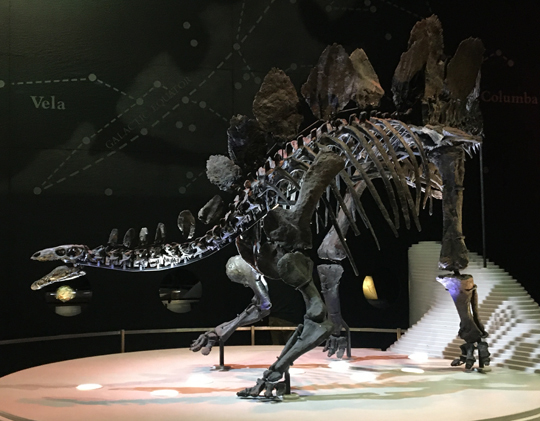
A view of the anterior of “Sophie” the Stegosaurus stenops specimen on display at the London Natural History Museum.
Picture credit: Everything Dinosaur
“Sophie” the Stegosaurus
The Stegosaurus currently on display at the Natural History Museum represents one of the most complete fossil specimens of a stegosaur every found. Everything Dinosaur received a lovely report on this new dinosaur exhibit from Milan and Alisha and we published an article on the children’s research.
To read Alisha’s and Milan’s excellent article on “Sophie” the Stegosaurus: Information about “Sophie” the Stegosaurus at the London Natural History Museum.
All of the dinosaur skulls studied had a scissor-like jaw action that moved up and down. Processing of any plant material in the mouth was relatively limited, the large digestive systems and the enormous stomach accounted for most of the digestive process. The team of UK-based scientists explored the bite force and potential skull stresses induced by the process of eating in these three dinosaurs using computer modelling. The intention was to gain an insight into the potential diets and feeding behaviour of the herbivores.
Fitting into an Ecological Niche
The study has also provided information on how Stegosaurus stenops may have fitted into its ecological niche. For example, the Late Jurassic of the western United States was home to a large variety of enormous sauropods, the scientists were curious to see if a bite force study could provide information on the niche occupied by large stegosaurs in an environment dominated by a variety long-necked dinosaurs.
Phylogenetic and Stratigraphic Relationships Between the Dinosaur Studied
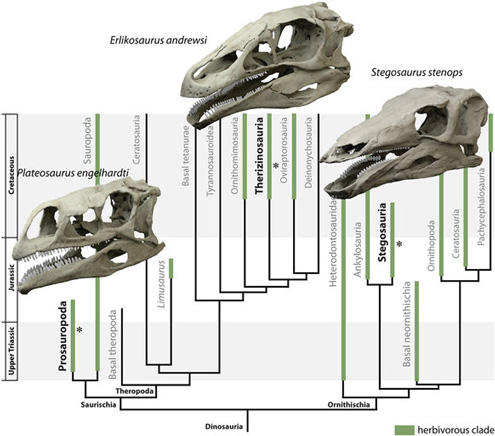
Digital images of the skull of Plateosaurus engelhardti, Erlikosaurus andrewsi and Stegosaurus stenops showing their in phylogenetic and stratigraphic context.
Picture credit: Nature Scientific Reports
The picture above shows the phylogenetic relationship (how closely related) the dinosaurs were as well as a stratigraphic comparison (how old the fossils are in relation to each other).
In Summary
- Plateosaurus – member of the Prosauropoda, part of the dinosaur lineage related to the Sauropoda. It was lizard-hipped and lived during the Late Triassic.
- Erlikosaurus – a member of the Theropoda, specifically a member of the Therizinosauridae family (scythe lizards). It was lizard-hipped and lived during the Late Cretaceous.
- Stegosaurus – a member of the Thyreophora, a sub-group of the bird-hipped dinosaurs. Stegosaurus stenops lived during the Late Jurassic.
Three-dimensional Scans
The three-dimensional scans of the fossil skulls and the computer models created permitted the team to examine the forces the jaws could create and the subsequent stresses on the skulls that feeding would have induced. Data from a study of crocodilian teeth was used to help factor in the role of the teeth in the feeding operation.
Dr Lautenschlager explained:
“Using computer modelling techniques, we were able to reconstruct muscle and bite forces very accurately for the different dinosaurs in our study. As a result, these methods give us new and detailed insights into dinosaur biology, something that would not have been possible several years ago.”
Professor Paul Barrett, (Natural History Museum) added:
“Far from being feeble, as usually thought, Stegosaurus actually had a bite force within the range of living herbivorous mammals, such as sheep and cows. Our key finding really surprised us, we expected that many of these dinosaur herbivores would have skulls that worked in broadly similar ways. Instead we found that even though the skulls were fairly similar to each other in overall shape, the way they worked during biting was substantially different in each case.”
Stegosaur Seed Dispersal
Depicted as a browser on horsetails and ferns, the bite force of Stegosaurus stenops would have made it quite capable of tackling a much wider range of vegetation, including tough cycads. This reinforces the belief that the tough scales associated with the throat of this dinosaur served as protection as it fed on the robust leaves of the cycads, the relatively small head might have evolved to enable this dinosaur to thrust its head deep into the heart of such plants to get at the most nutritious leaves. In terms of how Stegosaurus fitted into an ecological niche, these armoured dinosaurs may have played an important role in dispersing the seeds of woody, evergreen cycads.
The Impact of a Beak
As well as examining skull shape and structure, the impact of having a keratinous beak was also considered. Although the overall stress applied on the skull remained relatively unchanged, the presence of a beak seemed to reduce the amount of stress in the dentary, rostral and premaxilla, confirming results from earlier studies. The beaked Stegosaurus possessed a relatively high bite force with only moderate associated skull stress, indicating that it would have been capable of foraging on a wide variety of different plants. The scientists conclude that despite superficial similarities in skull and jaw shape, S. stenops had access to a much greater range of potential foods than other species incorporated within this study.
Stegosaurus Had a Powerful Bite
Picture credit: Natural History Museum of Los Angeles County
Stegosaurus Competing Against Sauropods
It seems that Stegosaurus could more than hold its own when compared to the enormous sauropods, with which it shared its habitat. This research does raise an intriguing question though, the stegosaurids seem to decline in the Early Cretaceous. The reduction in stegosaurid fossils as the Cretaceous progressed is put down to, by a number of academics, as a result of a transition in the fauna. The increasing dominance of angiosperms (flowering plants) playing a role in the demise of the stegosaurs.
However, other scientists have plotted the decline of the stegosaurids in relation to a decrease in the amount of cycads (Cycadophyta) present. This bite force study may help to provide palaeontologists with further data on the impact of changing fauna on the range of herbivorous dinosaurs that could adapt to new types of vegetation.


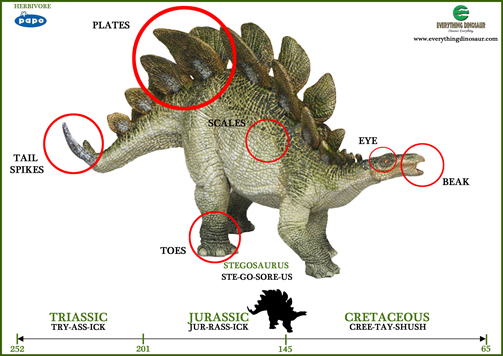
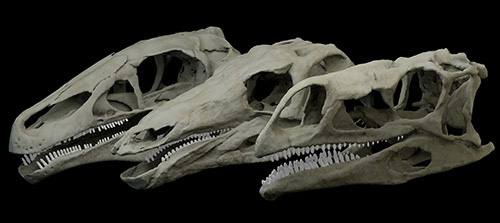
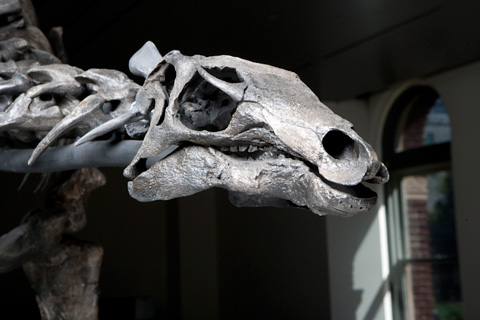




Leave A Comment